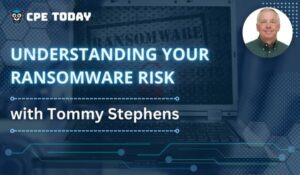
Major Topics
Learning Objectives
- Identify affected taxpayers, categories of income and loss, and passive losses under ?469 and necessary ?469 calculation steps and specify the ?469 & ?1211 limits and the ordering and suspension of any disallowed losses.
- Recognize a taxpayer’s material participation in an activity by: a. Identifying the material participation tests and their application to entities such as partnerships and corporations; b. Specifying the activity grouping rules and exempt activities; c. Determining passive activity particularly, the treatment of rental activity as passive; and d. Identifying “nested” activities.
- Identify special passive loss rules and calculations by: a. Determining alternating use effects on amount realized and ad-justed basis and citing additional loss limitations outside of ?469; b. Recognizing requirements for the special $25,000 allowance; and c. Specifying recharacterization rules and their purpose.
- Recognize the passive activity audit guidelines identifying audit issues, determine the real estate rental activity credit exception, and cite the at-risk limit rules as they relate to ?469.
Course Description
With the adoption of the passive loss limitation rules, taxpayers are looking to CPAs for guidance related to what deductions are allowed, disallowed, or suspended. Updating practitioners on the practical aspects of §469, this course addresses the needed skill to handle these pragmatic issues. Fundamentals are reviewed, planning opportunities are identified, and creative strategies are discussed and evaluated along with remaining traditional approaches. The goal of this instructive course is to understand and solve client problems under §469, with emphasis on tax savings ideas. Participants will learn to master the proper administration of these complex and often cumbersome provisions.
Compliance Information
Advanced Preparation
None
Field of Study
Taxes
Credits
2.5 Credits
Published Date
January 27, 2023
Revision Date
March 25, 2024Course Authors
Danny Santucci
Danny earned his Bachelor of Arts in Political Science from the University of California at Irvine in 1969. He received his Juris Doctorate from Boalt Hall School of Law, University of California at Berkeley in 1972, at which time he began practice as a tax attorney in Southern California. His legal career started with the business and litigation firm of Edwards, Edwards, and Ashton. Later he joined the Century City entertainment firm of Bushkin, Gaims, Gaines & Jonas working for many well-known celebrities. In 1980, Danny established the law firm of Santucci, Potter, and Leanders, in Irvine, California. With increasing lecture and writing commitments, Danny went into sole practice in 1995. His practice emphasizes business taxation, real estate law, and estate planning.
Overview
With the adoption of the passive loss limitation rules, taxpayers are looking to CPAs for guidance related to what deductions are allowed, disallowed, or suspended. Updating practitioners on the practical aspects of §469, this course addresses the needed skill to handle these pragmatic issues. Fundamentals are reviewed, planning opportunities are identified, and creative strategies are discussed and evaluated along with remaining traditional approaches. The goal of this instructive course is to understand and solve client problems under §469, with emphasis on tax savings ideas. Participants will learn to master the proper administration of these complex and often cumbersome provisions.
Course Details
- Identify affected taxpayers, categories of income and loss, and passive losses under ?469 and necessary ?469 calculation steps and specify the ?469 & ?1211 limits and the ordering and suspension of any disallowed losses.
- Recognize a taxpayer’s material participation in an activity by: a. Identifying the material participation tests and their application to entities such as partnerships and corporations; b. Specifying the activity grouping rules and exempt activities; c. Determining passive activity particularly, the treatment of rental activity as passive; and d. Identifying “nested” activities.
- Identify special passive loss rules and calculations by: a. Determining alternating use effects on amount realized and ad-justed basis and citing additional loss limitations outside of ?469; b. Recognizing requirements for the special $25,000 allowance; and c. Specifying recharacterization rules and their purpose.
- Recognize the passive activity audit guidelines identifying audit issues, determine the real estate rental activity credit exception, and cite the at-risk limit rules as they relate to ?469.
Intended Audience —
Advanced Preparation — None
Field of Study — Taxes
Credits — 2.5 Credits
IRS Program Number –
Published Date – January 27, 2023
Revision Date – March 25, 2024
Course Authors
Danny Santucci
Danny earned his Bachelor of Arts in Political Science from the University of California at Irvine in 1969. He received his Juris Doctorate from Boalt Hall School of Law, University of California at Berkeley in 1972, at which time he began practice as a tax attorney in Southern California. His legal career started with the business and litigation firm of Edwards, Edwards, and Ashton. Later he joined the Century City entertainment firm of Bushkin, Gaims, Gaines & Jonas working for many well-known celebrities. In 1980, Danny established the law firm of Santucci, Potter, and Leanders, in Irvine, California. With increasing lecture and writing commitments, Danny went into sole practice in 1995. His practice emphasizes business taxation, real estate law, and estate planning.
All of our self-study courses are NASBA approved (through our partners at K2 Enterprises) the revisions to the Statement on Standards for Continuing Professional Education (CPE) Programs (Standards).
Your Registration Includes:
- ✓ Course materials (video & PDF version)
- ✓ Unlimited attempts to complete exam
- ✓ Course materials (PDF & Sample Materials)
- ✓ Instant grading & certificate of completion
- ✓ One year access to complete your CPE
- ✓ Completion certificate



